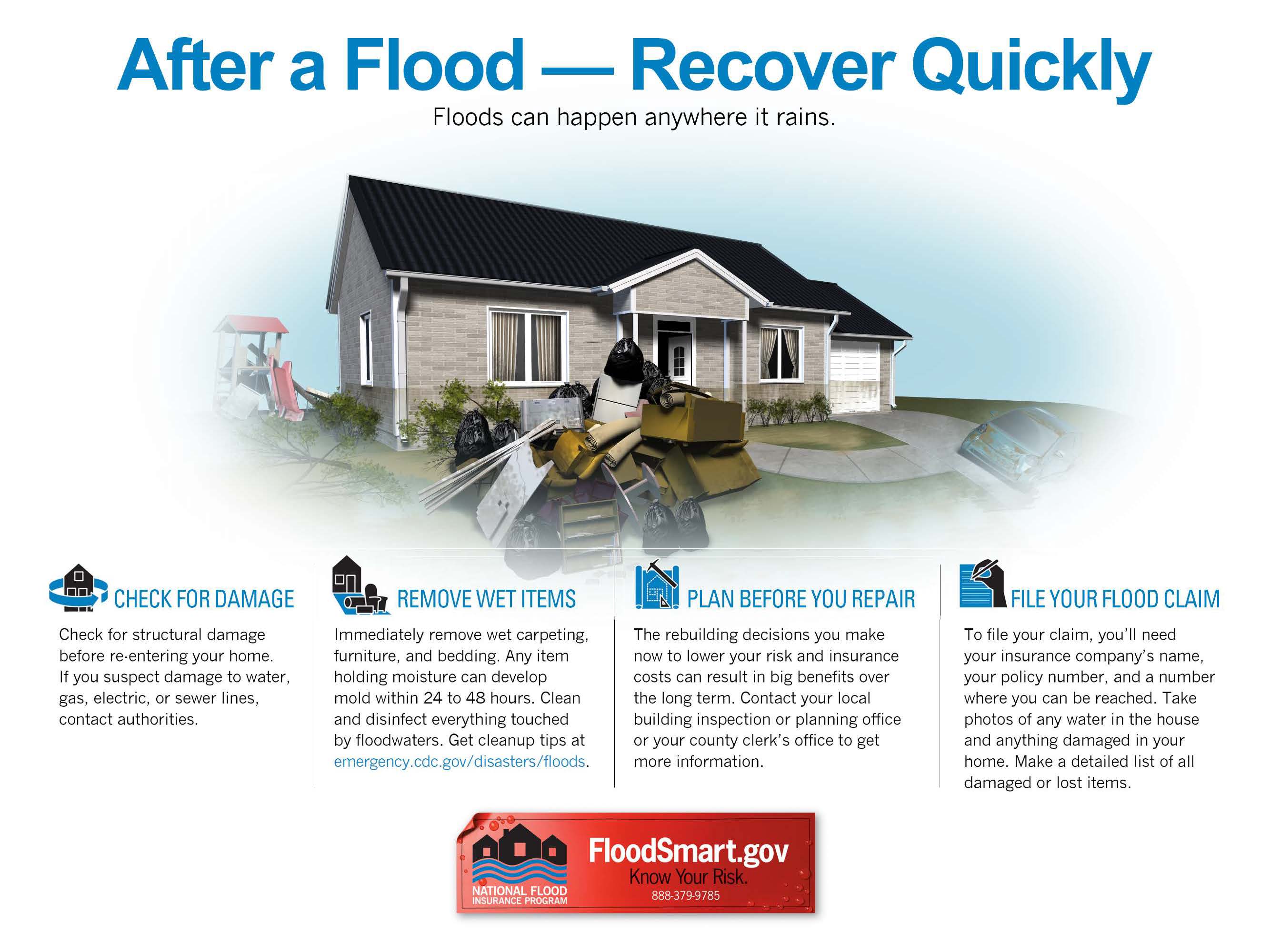In addition to high wind, hurricanes, tropical storms and tropical depressions can produce life-threatening storm surge, heavy rainfall and flooding. According to the National Hurricane Center, 88 percent of all deaths in the U.S. from these weather events are a result of storm surge, rainfall flooding, high surf, and deaths just offshore (within 50 nautical miles of the coast). With Hurricane Matthew threatening the east coast, make sure you know what to do before, during and after the storm to keep you and your family safe from these threatening conditions.
This information is derived from the Flood Planning and Resilience Guide for Hyde County, North Carolina prepared by North Carolina Sea Grant, as well as the Flooding and Its Aftermath fact sheet.

The following tips are from FEMA’s 2013 After The Flood fact sheet.
Follow these four steps, taken from FEMA’s 2014 Flood Insurance Claims Handbook F-687, to prepare your claim immediately after a flood.
1. Contact Your Agent or Company Representative to Report Your Loss: Have ready the name of your insurance company, policy number and a phone number and/or email address where you can be reached. All flood insurance policies require you to give prompt written notice of loss. If you get in touch with your agent or company representative directly, they will advise you how to file your notice of loss. Otherwise, you must send a written notice to your insurance company with your policy number.
2. Separate Your Property: Your policy also requires you to separate damaged property from undamaged property. Don’t throw anything away before an adjuster has seen it, unless local law requires you to. In that case, take photos of the property before disposing of it and keep samples for the adjuster to see. (For example, cut out a piece of wall-to-wall carpet.) Do all you can to protect undamaged property. However, prior to signing an agreement/contract with a cleaning, remediation or maintenance contractor, you should consult with your flood adjuster or flood insurer concerning coverage.
3. Make a List of Damaged Contents: If you’ve purchased contents coverage, make a list of damaged property. If you prepared comprehensive lists before the flood, this should be relatively easy. List the quantity of each item, a description, brand name, where it was purchased, cost, model, serial number (if appropriate), and your estimate of the loss amount. Attach your bills, receipts, photos and any other documents.
4. List Areas of Structural Damage: As you look over your property, make a list of any areas of structural damage you want to point out to the insurance adjuster.
If you have flood insurance, file your claim first and always take actions required by your claims adjuster. Then check the most recent guidance by FEMA to begin cleaning your property. The following tips are from FEMA’s 2013 After The Flood fact sheet.
If a flood damages your home or business, you may be required by law or ordinance to meet certain building compliancy requirements in your community to reduce future flood damage. To help with these costs, the National Flood Insurance Program includes Increased Cost of Compliance, or ICC, coverage for all eligible properties insured under the Standard Flood Insurance Policy. You may file a claim for your ICC coverage in three instances: